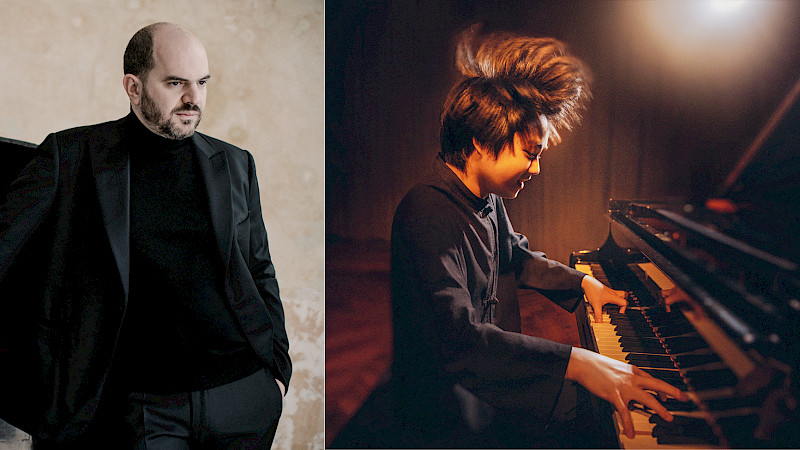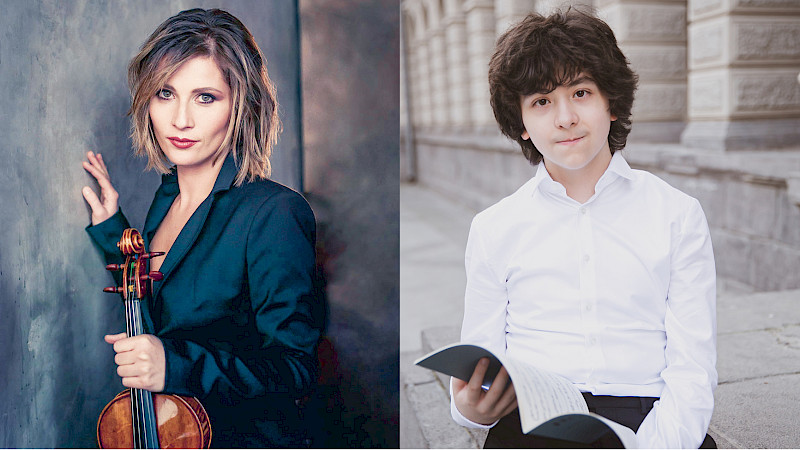
Marie-Antoinette, a cleaning lady and the harp
No harp without angels? Swiss harpist Tjasha Gafner on stereotyping and the question of what a French queen has to do with her instrument.
"Yes, I'm napping in my harp cover. Who else does that?" This is how 25-year-old Tjasha Gafner self-deprecatingly reports from the recording studio on her Instagram channel: the second day of recording her new album is exhausting - so the spacious cover of the concert harp is perfect for a short power nap. She also presents herself on social media as approachable, authentic and always with a pinch of humour. From time to time, she lets her followers vote on which harp she should choose for an upcoming recital. To ensure that the tonal differences can be heard particularly well, she plays the same excerpt on the two available instruments one after the other.
An all-round musical view
How do you present yourself as a musician on social media? How do you build networks? And what role does stage presence play? Questions like these were discussed during her studies at the Juilliard School in New York. "Music was the main focus, but we looked beyond the horizon. " The differences to her time at the Haute École de Musique in Lausanne were mainly in the school structure, rather than the harp lessons. She explains: "In Switzerland, it was all about the music - in New York, however, it was about how to arouse the interest of your audience and promote your concert."
Seeing music as a business and self-promotion initially sounds very commercial and impersonal, says Tjasha Gafner. "However, I realised the role these factors play in building a career." Nevertheless, the human element was never neglected - especially in her relationship with her lecturer Nancy Allen. In their private lessons, they talked more than they plucked the strings. "Nancy always said: I'm your cleaning lady. A very modest attitude. What she meant was that we were all already musicians and knew what we wanted." In other words: She was always available as a "cleaning lady" to sort out technical difficulties. In economic terms, this is a "bottom-up approach" in which the students know exactly what they need to improve.
More than an angel
When Tjasha Gafner talks about her former harp teacher Letizia Belmondo from Lausanne, she also goes into raptures. She had lessons with her for nine years. She was like a second mother, a sister and a friend to her - a role model in all areas. Belmondo is Italian, "at some point I started to adopt her accent because I wanted to be like her". Musicians contribute a lot to how their instrument is perceived. It is therefore reasonable to assume that the imitation of her mentor has created a link between the harp and an Italian accent in Tjasha Gafner's mind.
From a stereotypical point of view, there is probably more of a connecting line between harp and angels: A glissando seems to catapult us straight to the gates of heaven. Such a cliché seems restrictive, but Tjasha Gafner also sees an opportunity in it. After all, harpists are partly responsible for how they are seen - you just have to take the reins into your own hands. However, frantically pretending to be a harpist in order to put an end to the pigeonholing of angels is out of the question: "I'm aware that I'm a harpist with long blonde hair. But I don't change myself just to look like a rebel." Rather, she can try to show the versatility of the harp with her programmes.
Room for something new
Piano repertoire is widespread in the harp world, but the possibilities of the instruments are not exactly the same. If you press the first pedal on the harp all the way down from the left, you get a D sharp - in every octave. The piano allows more freedom in this respect. "That's where you have to develop new ideas and get creative," says Tjasha Gafner. She is currently working on Shostakovich's Jazz Suite with a flautist. She would also like a transcription of Ravel's "Ma mère l'oye" for piano and harp.
she has received 20 awards in ten years, including first prize in the harp category of the ARD Music Competition. "Die Zeit" also voted her one of the thirty most important personalities under the age of thirty in Germany in 2023.
Influencer of the 18th century
Around 250 years earlier, this honour might have gone to Marie-Antoinette. In a portrait by Gautier d'Agoty from 1777, she can be seen playing a gilded harp in her salon at the Palace of Versailles - surrounded by an amused little party. Because she played this instrument, other aristocrats wanted to do the same. Tjasha Gafner puts it appropriately for our time: "Marie-Antoinette made the harp trendy again." She can therefore be described with a clear conscience as an influencer of the 18th century.
The French aristocracy supported this trend and financed the further development of the harp - especially the pedal mechanism. Initially, the instrument was at home in living rooms and parlours. It was not actually built to be played insanely loud, admits Tjasha Gafner. As a result, it often goes a little underplayed in the orchestra: "You can see the harpist moving her fingers, but you can't hear anything." This is also one of the reasons why the Lausanne native became a soloist and not an orchestral musician. An amplifier could help here, she says.
Tjasha Gafner won't need it at the Kleine Tonhalle: she will be performing with her best friend, pianist Aurore Grosclaude, on 3 February 2025 - and will be delighted if there is room for something new alongside the angelic image.
We use deepL.com for our translations into English.





